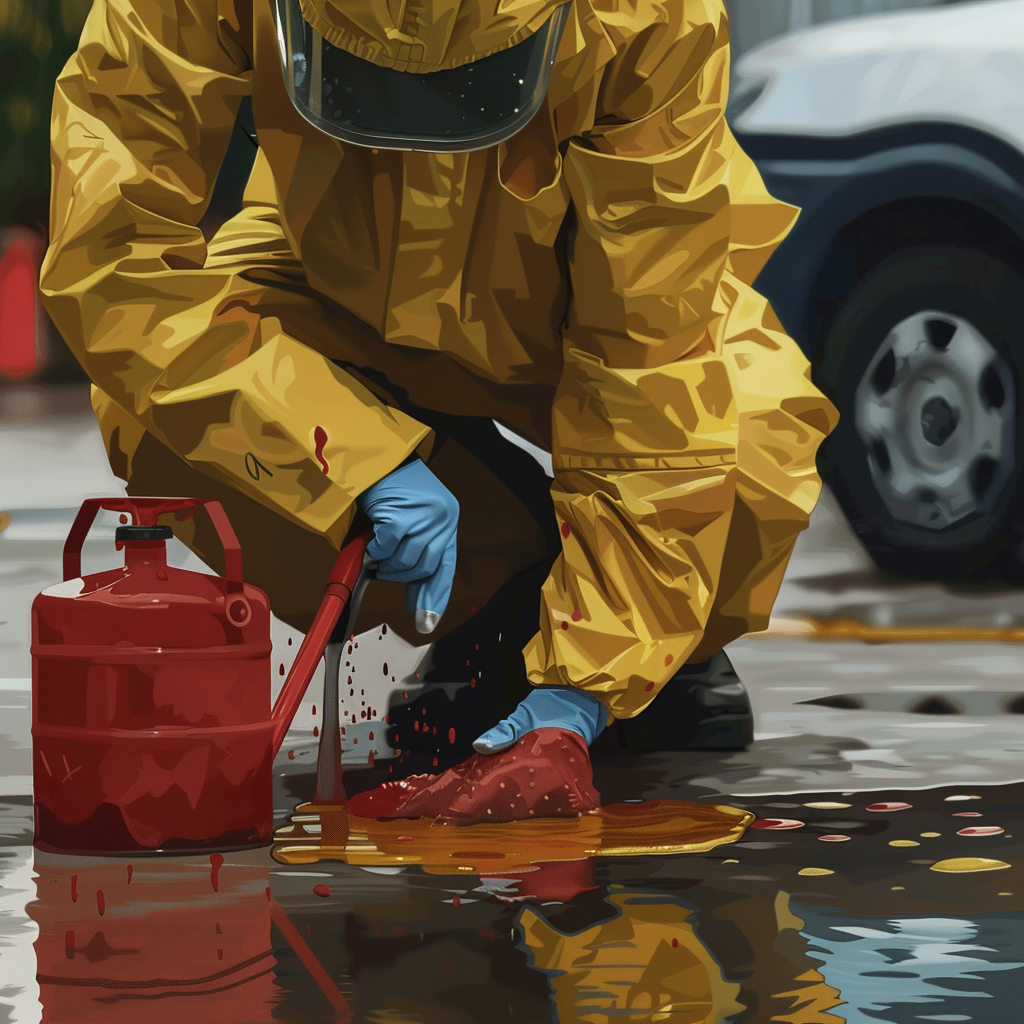Effective Methods for Safely Cleaning a Gasoline Spill
Gasoline spills can pose significant hazards to both the environment and human health. Quick and efficient cleanup is essential to minimize damage and ensure safety. Here, we’ll detail the best practices and methods for effectively handling a gasoline spill.
Understanding the Risks of Gasoline Spills
Gasoline is a highly flammable and toxic substance. It can cause numerous problems, including:
- Fire Hazards: Gasoline vapors can ignite easily.
- Health Risks: Exposure can lead to respiratory issues, skin irritations, and long-term health problems.
- Environmental Damage: Gasoline can harm soil and water ecosystems.
Knowing the potential dangers underscores the importance of following correct procedures for cleanup.
Immediate Response
1. Prioritize Safety
Ensure that anyone in the immediate vicinity is aware of the spill and moves away from the area to reduce exposure risk. Wear appropriate protective gear, such as:
- Gloves
- Safety goggles
- Respiratory masks
2. Prevent Further Spread
Quickly contain the spill to prevent it from spreading further:
- Absorbent Materials: Use absorbent materials like sand, cat litter, or commercial absorbent pads to contain the spill.
- Barriers: Set up physical barriers like booms or dikes to keep the gasoline from moving.
3. Eliminate Ignition Sources
Gasoline vapors are highly flammable. Ensure that all possible ignition sources are eliminated:
- Turn off electrical devices
- Avoid using cell phones near the spill
- Extinguish open flames and smoking materials
Cleaning Up the Spill
1. Absorption Technique
Materials Needed: Absorbent pads, sand, cat litter
Spread absorbent material over the gasoline to soak it up. Wait for the material to absorb all the liquid fully. Once saturated, carefully collect the absorbent material and place it in a sealable plastic bag or container.
2. Removal and Disposal
Properly disposing of contaminated absorbent material is crucial:
- Do not throw it in regular trash
- Take it to a hazardous waste disposal facility
Contact local waste management services for specific disposal instructions to ensure compliance with regulations.
3. Cleaning Residue
After removing the main spill, there may still be some residue left:
- Chemical Cleaners: Use specially formulated cleaners designed for petroleum products.
- Detergents: Mild detergents and warm water can also help to clean up small residues.
Use a scrub brush to work the cleaner into the surface, then rinse thoroughly with water. Ensure all runoff is collected and disposed of properly.
Dealing with Large Spills
For significant gasoline spills, self-cleaning methods may not be sufficient. It is recommended to contact professionals who have the specialized equipment and expertise to handle large spills. They will:
- Assess the extent of the spill
- Use advanced containment and cleanup techniques
- Ensure environmental regulations are followed
Preventing Future Spills
Preventative measures can significantly reduce the likelihood of gasoline spills:
- Regular Maintenance: Maintain vehicles and fuel storage containers to prevent leaks.
- Safe Handling: Follow correct procedures when refueling or transferring gasoline.
- Proper Storage: Store gasoline in approved containers in a cool, well-ventilated area.
Emergency Preparedness
Having an emergency response plan in place can mitigate the impact of gasoline spills. Ensure that you:
- Have spill kits readily available
- Know how to use personal protective equipment
- Understand proper reporting procedures for significant spills
Conclusion
Effectively managing a gasoline spill requires prompt action, appropriate protective measures, and thorough cleaning processes. By understanding the risks and following best practices, you can ensure safety and mitigate environmental impact. Always be prepared with essential supplies, aware of the necessary steps, and ready to contact professionals when needed.





